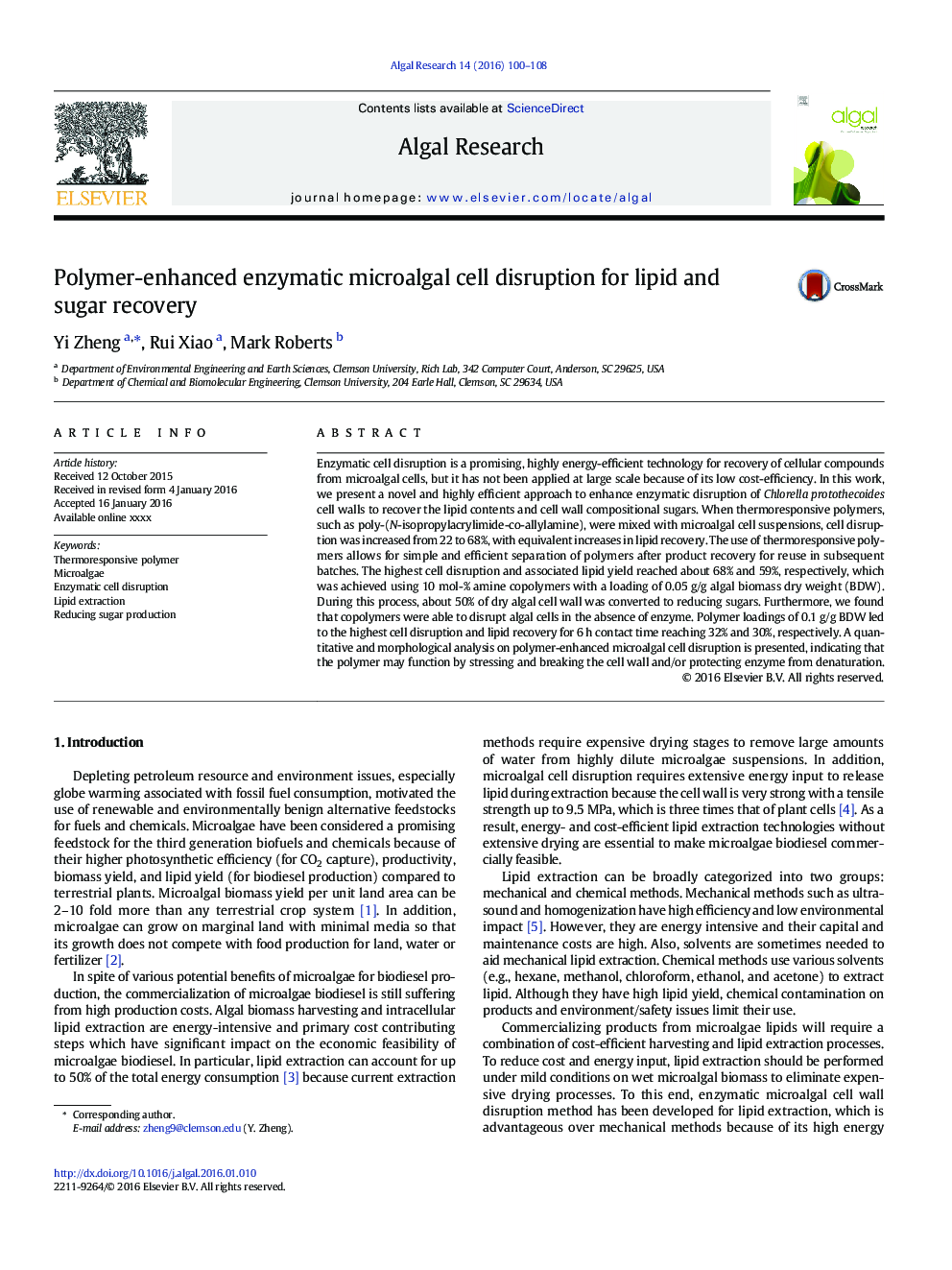| Article ID | Journal | Published Year | Pages | File Type |
|---|---|---|---|---|
| 8087393 | Algal Research | 2016 | 9 Pages |
Abstract
Enzymatic cell disruption is a promising, highly energy-efficient technology for recovery of cellular compounds from microalgal cells, but it has not been applied at large scale because of its low cost-efficiency. In this work, we present a novel and highly efficient approach to enhance enzymatic disruption of Chlorella protothecoides cell walls to recover the lipid contents and cell wall compositional sugars. When thermoresponsive polymers, such as poly-(N-isopropylacrylimide-co-allylamine), were mixed with microalgal cell suspensions, cell disruption was increased from 22 to 68%, with equivalent increases in lipid recovery. The use of thermoresponsive polymers allows for simple and efficient separation of polymers after product recovery for reuse in subsequent batches. The highest cell disruption and associated lipid yield reached about 68% and 59%, respectively, which was achieved using 10 mol-% amine copolymers with a loading of 0.05 g/g algal biomass dry weight (BDW). During this process, about 50% of dry algal cell wall was converted to reducing sugars. Furthermore, we found that copolymers were able to disrupt algal cells in the absence of enzyme. Polymer loadings of 0.1 g/g BDW led to the highest cell disruption and lipid recovery for 6 h contact time reaching 32% and 30%, respectively. A quantitative and morphological analysis on polymer-enhanced microalgal cell disruption is presented, indicating that the polymer may function by stressing and breaking the cell wall and/or protecting enzyme from denaturation.
Related Topics
Physical Sciences and Engineering
Energy
Renewable Energy, Sustainability and the Environment
Authors
Yi Zheng, Rui Xiao, Mark Roberts,
